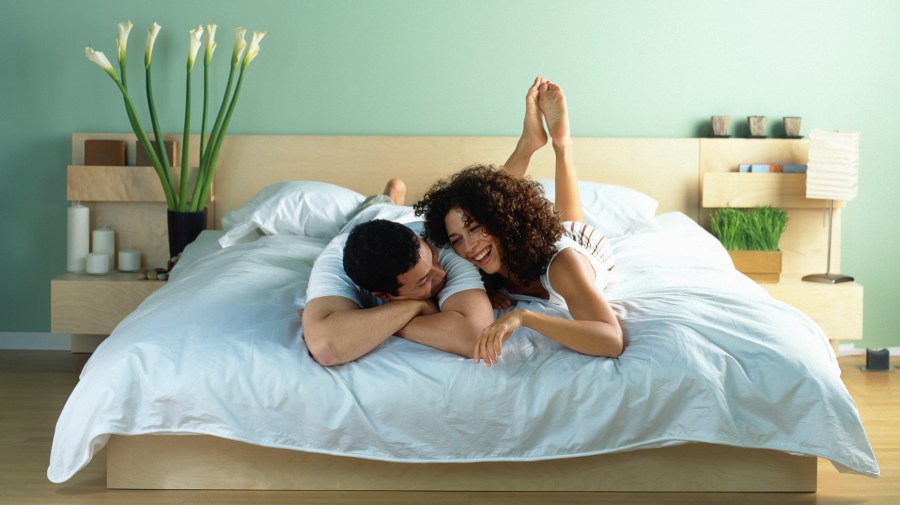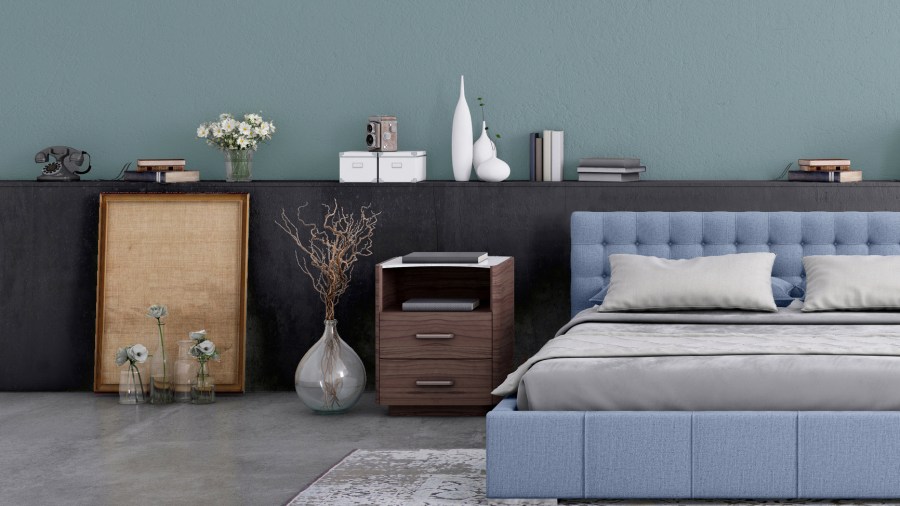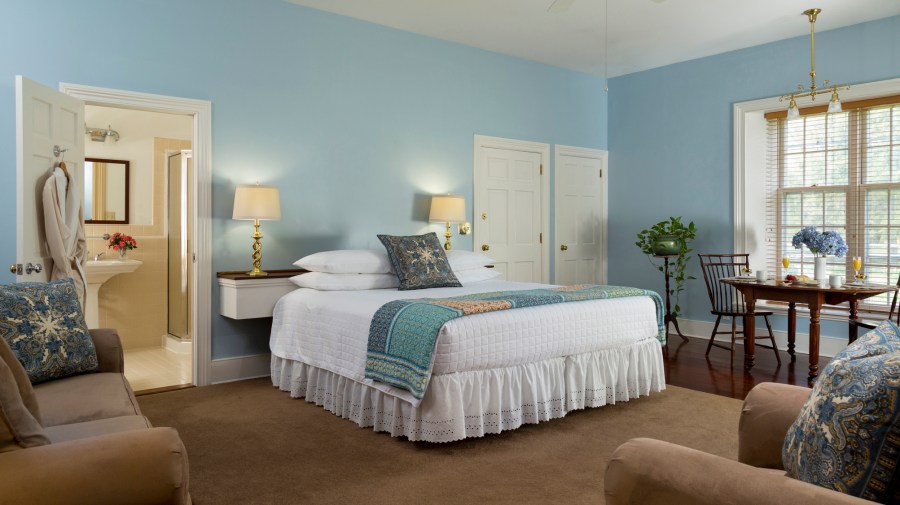How Do You Choose a Paint Color for Your Bedroom?

Ready to deck out your bedroom with an entirely new look? Creating the perfect vision for your sleep space is exciting and fun — once you get past the challenging first step of choosing a new paint color. Achieving the look and feel you want for your primary relaxation zone all starts with selecting the perfect color for your walls.
Do you want the room to inspire a bright, cheerful mood or promote a sense of calm? The color you choose can help you achieve it. Are you interested in lavish furnishings and decor or pieces with simple tones and lines? Your walls need to complement your desired look, not clash with it. Your final choice comes down to personal taste, but we can offer some insight to help you create the bedroom of your (sweet) dreams.
Pick Your Favorite Colors
Start by thinking about colors you really like and heading to your nearest hardware or home improvement store to pick up some paint samples that catch your eye in those color groups. Be sure to choose samples in both light and dark tones for each color. Regardless of the emotions and themes associated with different colors, you want the color you choose to be one you like. Don’t waste time looking at samples you don’t find visually appealing, and don’t get caught up in trends that focus on a color you don’t actually like.

You are the one who spends time in your bedroom, and you want to enjoy the experience. Do you find neutral colors like white, gray and brown to be boring and dull? Then don’t choose those colors for your walls just because they are universal and easy to match to furnishings and bedding. Are you drawn to pastel colors or rich jewel tones? Or do you love bright, vibrant colors? You instinctively know what you like, and that is your starting point for narrowing down the list of possible colors.
Give Some Thought to Color Psychology
After you collect samples of the paint colors you like best, think about the mood (feeling) you want to promote inside your bedroom. The concept of color psychology focuses on the ways colors promote different emotions. For example, the warm hues on the color wheel — red, orange and yellow — tend to inspire more energetic feelings. Many people associate the color red with strong, passionate emotions like love, lust and anger, while orange dials the energy back a bit to create a sense of bravery and confidence but with a little less daring. Not surprisingly, yellow promotes happy, positive, “sunshiney” feelings.

In contrast, cool hues on the color wheel — blue, green and purple — often promote soothing, relaxing emotions. Blues are typically associated with feelings of calmness and serenity because of their association with the sky and the ocean — those bodies take on dark gray or black tones when they aren’t calm during storms — and greens often bring to mind freshness and renewal because of their association with plants and growth. Purples inspire a hint of mystery and have a centuries-old connection to royalty, luxury and even the occult.
Keep in mind that in some cases, negative expressions in society cause some people to feel negatively about colors that usually promote positive feelings. For example, you may associate the color blue with feelings of sadness rather than calm tranquility, thanks to depression-related expressions of “feeling blue.” Similarly, the tendency of some people to refer to cowards as “yellow” may make you think of caution and cowardice when you see the color yellow instead of happiness. Variations in shade can also change how colors make you feel. A bright blue probably won’t feel as soothing as a light sky blue, and a soft baby pink won’t feel aggressive and bold like a dark red.
Of course, not everyone wants color on their walls, instead preferring to stick to neutral paint tones in shades of brown, white or black. Shades of tan and brown bring to mind feelings of dependability and coziness and are common choices for more reserved personality types. White creates a crisp, clean look and sparks feelings of purity, while black generally creates a negative vibe, except when it’s used as a powerful, elegant accent color. As a blend of white and black, gray is a popular paint choice that depicts the harmony of the two. Color psychology offers some insight into the common relationships between colors and emotions, but your own feelings about a particular color will always matter more than any general guidelines.
Think About the Mood You Want to Create
As you ponder the emotions associated with different colors and eliminate paint options, think about the mood you want to create in your bedroom. If you’re not sure how to answer that question, then consider how you will normally use the room. Do you expect to only spend time in your bedroom when you enter to go to bed at night? Then the mood inspired by your color choice may be less relevant, and you can simply focus on complementing your chosen bedding and decor.

However, if you plan to relax in your bedroom in the evening curled up with a good book or the remote control, then you may want to gravitate to more relaxing cool tones like lighter blues, greens and purples to encourage your body to release tension and wind down. Do you expect to spend more time in your bedroom in the bright light of morning, sitting next to a sunny window while you sip your coffee and watch the morning news? Then warm, energizing colors in the red, orange or yellow families may be just what you need to help you feel revitalized and ready to face the day.
Color Coordinate with Your Adjoining Rooms
If you’re still having trouble making a decision, then you can always resort to basic interior decorating tactics and color coordinate your adjoining rooms. For example, if your bedroom has an adjoining master bathroom that is painted a pretty shade of pink, then you could think about colors for your bedroom that would complement the pink. That could mean painting your bedroom another matching shade of pink or opting for a complementary color on the color wheel, which you can find online. (For the pink example, colors in the green family would be complementary.)

Use an Online Paint Color Viewer
Many paint manufacturers have fun and useful tools on their websites that allow you to upload a photo of your room and “paint” the walls with different colors of your choice. The tools are usually easy to use and allow you to see in an instant if you like a particular color or if it’s darker or lighter than you thought based on the sample. However, it’s important to keep in mind that you need to use high-quality, well-lit photos of your rooms to ensure the most accurate results. Paint colors could look dramatically different if the lighting in your photo is poor. Most companies also provide a variety of stock images to practice with, and it’s generally a good idea to compare the look of the paint on your photo with that of a stock photo.






